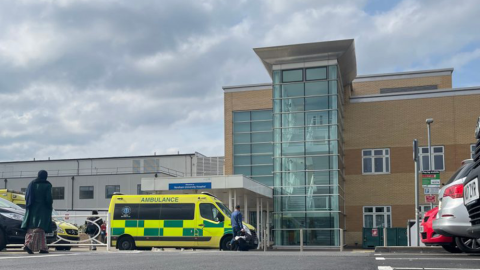
Project overview:
At just under £1m, this project is the largest we undertook as part of the works, and we completed it on time and within budget.
The fire panels and network wiring required upgrading to support the current system and future upgrades. The old Morley ZX5E couldn’t be expanded, and transmission times were too slow.
We worked alongside the Trust’s project team to design a new network of 98 Advanced MXpro 5 panels, while keeping the existing system live.
Project highlights
1.) We brought the cause and effect, zoning, and alarm zones in line with HTM0503-Part B and the fire strategy.
2.) We installed new panels alongside the existing ones so the entire network could be soak-tested before the changeover.
3.) After a successful soak test, the existing loops were meticulously moved over on a panel-by-panel basis onto the preconfigured Advanced panel and tested. This was to keep the cause-and-effect running between neighbouring wards.
4.) We introduced Nimbus cloud-based technology. This innovative solution allows the end user to monitor the building more effectively. Additionally, we implemented BT Redcare monitoring, significantly improving communication with the Alarm Receiving Centre and enhancing the hospital’s overall safety measures.
5.) Once we’d moved all panel loops to the new system, we completed a cause-and-effect test, which the hospital’s project team and the Estates Department witnessed.
Obstacles our team faced:
Throughout this seven-month project, our team overcame several significant obstacles.
The long-term upgrades required future planning to ensure that the network could add new elements to the new system over the coming years, so we had to review the entire complex site fully.
One of the biggest challenges was ensuring live hotel safety. Newham is a large hospital with A&E and maternity departments situated in a densely populated area of East London. All areas had to be worked on live as the street and critical wards never close or have quiet periods. Our activities could not be an obstacle to day-to-day activities.
Our team conducted a thorough review and test of the cause and effect, addressing the issue of existing zones that were often too large and did not match the alarm zones.
The biggest technical design issue was that the Morley panels ran 5 loops in many areas and could cross the zoning between panels. Replacing the 5-loop panels meant using an 8-loop, but zones could not be crossed between panels.
There were multiple hospital departments involved in the project, as the project installation and commissioning involved every area of the hospital. Communication was key.
How our team overcame the obstacles
Our Director, Steve Middleton, took on the primary design responsibility and attended numerous consultations with the Trust to provide a thorough design based on what was currently installed and what needed to be installed over the next three years.
To keep disruption to a minimum, we immobilised onsite and had a compound comprising an office, stores, and canteen. We had a consistent and dedicated team, including a PM, supervisor, and H&S-trained operatives. The installation team worked days, nights, early, early, late, and weekends to ensure they could access all areas of the site. All work areas were behind portable barriers that we could move quickly.
We arranged changeover and testing with a hospital fire watch. However, we were able to keep downtime to only one hour per panel during this period. Our commissioning team achieved this by preconfiguring the new panels for approximately 11,000 devices.
We rezoned the site and provided new zone plans. We worked with the Trust to provide a new cause and effect, which meant that the system could be controlled on a ward-by-ward basis and considered the fire compartmentation.
The 5-loop panels were reviewed, loop numbers moved around, and zones split so the loops from one old panel could work across two new panels.
Overall, the main success factors were our team’s dedication to completing the project and the communication between us and the hospital management, wards, estates, and security. We hosted daily briefs, weekly progress meetings, and milestone meetings to provide clarity throughout.
Gergo Kohidi, Senior Project Manager, Turner & Townsend
Due to the nature of the environment and having to install nearly 100 panels with minimal disruption, this complex project would be a challenge for all involved. It required regular and clear communication between M&G Fire Protection, Project Management, and Barts staff to enable work to occur.
M&G also had several other significant responsibilities. They had to rewire the entire panel network infrastructure, provide a new mains supply for each panel, rezone the whole site, and write a new cause & effect.
M&G’s site team worked meticulously alongside the trust to ensure that day-to-day operations were unaffected. They worked very flexibly, with changes to plans often being necessary at short notice.
Health and Safety was at the forefront of the project management concerns, which was managed and documented daily by M&G Fire Protection Project Manager Paul Ainger and Supervisor Bob Parsons. There were no health and safety incidents throughout the 7-month project.
M&G completed the project on time and within budget, managing multiple variations. They kept downtime to a bare minimum, with structured fire patrols only required to cover a small area at a time while they swapped loops to the new panels.
The team worked in harmony with the hospital’s day-to-day activities, and we cannot thank them enough for their hard work and congratulate them on a highly well-delivered project, which our client Barts NHS Trust were happy with.